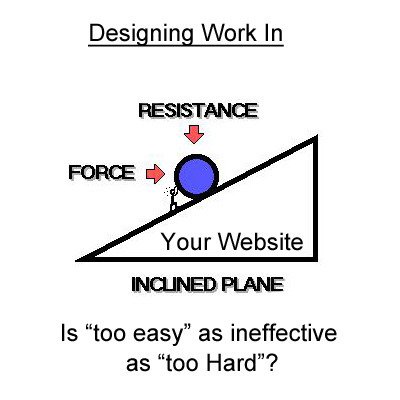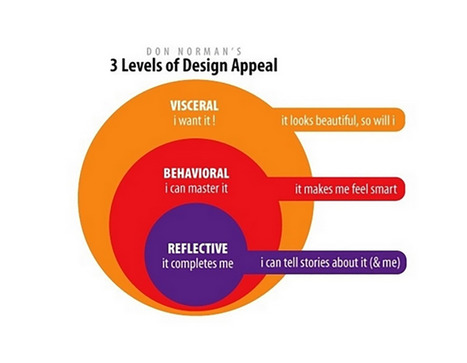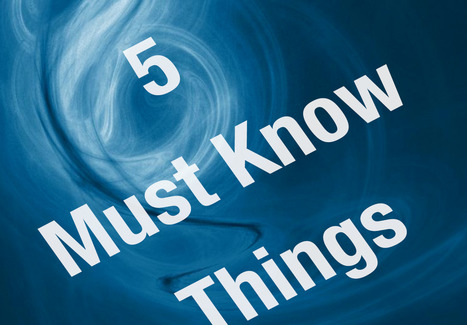Emotional Branding Guide
This excellent guide to building emotions into your brands focuses on products, but every lesson here applies to web design too. Finding ways to infuse your web designs with relevant value, cultural, and "made to stick" messages, connections, and images are every designer's and web marketer's job.
Get Started for FREE
Sign up with Facebook Sign up with X
I don't have a Facebook or a X account

 Your new post is loading... Your new post is loading...
How strong is your content marketing strategy? What is SEO, anyway? Read 6 SEO tips and tricks to help you boost the visibility of your web content.
Pageless design frees websites from the outdated conventions of print design and fully utilizes the digital platform they’re built on. 8 Compelling Reasons Why "Pageless' Web Design Wins (in the end): * Tells a better story. * Easier to "digest" or understand what to do. * Emotionally more powerful. * Higher Conversion Rates!!! * Lowers BOUNCE & encourages sharing. * Looks great on all devices (mobile included). * Lower cost to develop.
It’s vital to move beyond the standard logo and tagline and take a holistic approach to evoking emotions among potential customers across all of your marketing channels — including social media sites.
Martin (Marty) Smith's insight:
Love this graphic, part of a solid Social Media Today article about how color converts. 
Drora Arussy's curator insight,
June 16, 2013 9:46 AM
Color speaks to us - from what the teacher wears in a frontal classroom to what the background color is in a virtual assessment. We want our students to connect and "buy into" what we are teaching, branding is so important. As a side note, note that blue (of blue and white fame) signifies dependability and strength, isn't that what we want our students to see when they think of Hebrew and Israel? Of course, we would love to have all the colors blended in at certain points, be aware of the colors you use across the board - literal and virtual.
You can’t imagine your life nowadays without the internet. We all spend hours and hours doing various things, like work, research, entertainment. * FANS - where are the fans (testimonials, games, contests). * Games & Mobile - scream to download the app. Of these 35 designs Metallica and Incubus would convert the best. I understand branding must be done, but this much screaming branding is obsessive and damaging to conversion. Sometimes the best brand strategy is to make it easy for fans or supporters to JOIN and CONTRIBUTE. |
|

|
Scooped by Martin (Marty) Smith |
Should Our Web Designs Be Harder? Adding DEMANDS Back Into Our Web Designs

Making Demands Again & Designing Design In
At our Startup Factory funded startup Curagami we've been asking questions about how online communities are built and sustained. We are beginning to connect some important ideas from great thinkers:
Dan Ariely TED Talk on Meaning, Work and Motivation
http://www.ted.com/talks/dan_ariely_what_makes_us_feel_good_about_our_work
Trendwatching Report on "Demanding Brands"
http://trendwatching.com/trends/demandingbrands/
Daniel Pink's book Drive: Surprising Truth Behind What Motivates Us
http://www.danpink.com/books/drive
Content Marketing Triptych
http://sco.lt/4iT0xl
Web Design & "Work"
Yes, we now realize, you can make your website too easy. You can also make it too hard. Perceptions of "hard" and "easy" are highly relative judgements. An experts will find things easy the novice find very difficult.
SO one of the most important ideas for designing "work" into a website is finding a way to put people of similar levels of understanding in the same bus. We thinking of all visitors in 3 cohorts or tribes:
* Novice or new to whatever the site is sharing.
* Learning and so exposed to and thinking about the subject.
* Expert able to teach the Novice and Learning group.
At first we thought we should cluster members of each of these tribes into their own paths. All novices together, all learners together. After listening to Malcolm Gladwell and refining some of our testing conditions we realize such artificial selection harms rather than helps.
Community Is The Key
The key is creation of online community where peer to peer interaction is possible, supported, encouraged and rewarded. We, as website designers, can't combine our Lego blocks in as many variations as possible given the real creativity and engagement of our customers.
The ONLY thing we can do as web designers is clearly communicate OUR creation story, provide access to our Lego-blocks and CURATE the cool creations of our tribe.
The rub comes in at the "provide access to our Lego-blocks" web design stage. If your blocks encourage creativity and just the right amount of work your customers will want to SHOW YOU their creations as we learned from our friends at Haiku Deck.
Our interaction with Haiku Deck helped us create the Content Marketing Triptych:
* Tool that engages the BUILDER in us.
* Gallery where tool users share their creations (their work).
* Personal Profile (their content on your site).
The missing "magic box" for web designers is knowing WHO to ASK what. These ideas are "live ammunition" for ecommerce merchants. Too much work and you lose money. Too little and you lose the opportunity to win hearts and minds through just the right amount of work on top of the perfect contextually relevant ask.
What IS clear is finding ways to make demands and reward what our customers and advocates do with those demands is a CSF (Critical Success Factor) to winning web design. What are your experiences with building work back into your marketing?

|
Scooped by Martin (Marty) Smith |
Google's Disparate Design Lesson - Agnes Martin Feature

Google Features Work of Artist Agnes Martin
When I lived in Chicago the Milwaukee Art Museum was having an Agnes Martin exhibit. One Saturday I decided to drive the hour and a half to see the exhibition since I love the Milwaukee Art Museum (and this was before they got their amazing "cap")..
On the outside looking in you might think painting lines over and over again for most of your life would be boring to do and even more boring to view. You would be wrong on both sides of the equation.
Agnes Martin's work is a study in quiet power. Google's use of an Agnes Martin image today celebrating a great but hardly well known American artist teaches valuable design lessons including:
* Embrace the seemingly disparate.
* In a noisy world QUIET Design works.
* Simple and clean is the hardest design to do.
* Quiet repetition works too.
* Brand the unknown but beautiful.
* Share your brand authority with high quality but unknown memes.
If your designs can do any two of these six ideas you would be a hero and your company will WIN. Today Google did all six, but then they are GOOGLE :).

|
Scooped by Martin (Marty) Smith |
Having trouble coming up with a logo? Our latest study highlights which combinations of fonts, colors and formats are used by the world's top brands.






![The Role of Color in Marketing [INFOGRAPHIC] | Social Media Today | Must Design | Scoop.it](https://img.scoop.it/5ZsauP9vA_nIpv1lGd_Vszl72eJkfbmt4t8yenImKBVvK0kTmF0xjctABnaLJIm9)


![Fonts & Colors Big Brands Use To Win Loyalty and Promote Engagement [Infographic] | Must Design | Scoop.it](https://img.scoop.it/S-KxbZ4_NhYiD2xJkatI5jl72eJkfbmt4t8yenImKBVvK0kTmF0xjctABnaLJIm9)





Great primer on how to build emotions into your product, web, and services designs.